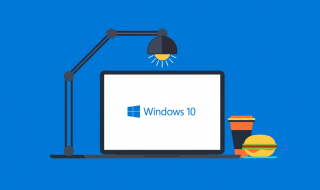A brilliant technology that sits idle is like a story untold (and investments unrewarded). Somebody should effectively communicate it and deliver to the market. Most non-technical jobs in tech come in, connecting innovation with business impact. As a result, demand for these roles continues to grow rapidly. Finding and onboarding the right talent for these positions, however, presents its own unique set of challenges. This is where outstaffing can offer a smart solution. Whether you’re looking to hire marketing specialists, product managers, or, say, UI/UX designers, outstaffing may be your effective shortcut to global expertise and cost savings.

Contents
- The Hidden Complexity of Non-IT Recruitment
- The Full Potential of Outstaffing for Non-Tech Roles
- Global talent access
- Reducing time-to-hire even for roles that require specialized business knowledge
- Navigating complex compensation expectations across markets.
- Handling high volume of entry-level and mid-level non-tech positions
- Ensuring continuous skill development in fast-evolving business areas
- Balancing cost efficiency with quality of non-IT hiring
- Specialized soft skills evaluation
- Compliance and risk management
- 24/7 productivity
- How Many You Save With Outstaffing
- Can Outstaffing Be a Risky Bet?
- Quick Guide: Choosing the Right Outstaffing Partner
The Hidden Complexity of Non-IT Recruitment
It’s a common misconception that hiring for non-tech jobs is easier than recruiting developers or engineers. While the hiring stages for non-technical and technical roles differ, both require specialized knowledge. For example, evaluating a business analyst’s ability to bridge stakeholders and technology is as nuanced as assessing a developer’s coding skills. Outstaffing agencies bring this expertise to the table, saving you countless hours and reducing the risk of a bad hire.
| Role | Hiring Stages | Hardest Parts |
| Marketing Specialists | Portfolio review, skills test, cultural fit interview, negotiation | Assessing creativity and up-to-date digital marketing skills like ASO |
| Product Managers | Behavioral interviews, case studies, stakeholder alignment tests | Evaluating strategic thinking and cross-team communication |
| UX/UI Designers | Portfolio evaluation, design challenge, user empathy assessment | Balancing creativity with usability and business goals |
| Business Analysts | Scenario-based interviews, technical understanding, stakeholder management | Ensuring deep understanding of both business and tech domains |
| HR Managers | Situational interviews, compliance knowledge tests, cultural fit | Assessing adaptability to remote work policies and diversity goals |
| Customer Support | Language proficiency tests, role-playing, stress interviews | Handling high volume efficiently and assessing soft skills |
The Full Potential of Outstaffing for Non-Tech Roles
Global talent access
In-house non-IT hiring typically limits you to local or regional candidates. Outstaffing opens access to specialists worldwide—for example, digital marketing experts in Eastern Europe or HR managers in Southeast Asia—expanding your talent pool by up to 70%.
Reducing time-to-hire even for roles that require specialized business knowledge
Streamlined recruitment processes and pre-vetted candidate pools accelerate hiring of qualified non-tech professionals. While in-house recruitment can take 2-3 months on average, outstaffing reduces time-to-hire by 40-60%, allowing you to scale teams quickly for projects or market shifts without long-term commitments.
Agencies provide up-to-date market insights on salaries and benefits for non-tech roles, enabling competitive yet cost-effective offers.
Handling high volume of entry-level and mid-level non-tech positions
Outstaffing firms efficiently manage bulk recruitment for roles like customer support or administrative specialists without compromising quality.
Ensuring continuous skill development in fast-evolving business areas
Agencies recommend candidates with adaptability and support ongoing training to keep pace with market and technology changes.
Balancing cost efficiency with quality of non-IT hiring
Outstaffing offers flexible models to hire high-caliber non-tech talent from regions with favorable cost structures.
Specialized soft skills evaluation
Outstaffing firms use targeted behavioral assessments to evaluate communication, leadership, and cultural fit critical for non-tech roles, reducing bad hire rates by 20%.
Compliance and risk management
Managing multi-jurisdictional labor laws in-house can delay hiring and increase legal risks. Outstaffing providers ensure full compliance, mitigating costly legal issues.
24/7 productivity
Leveraging talent across time zones enables continuous workflows, accelerating project delivery by up to 30% compared to centralized teams.
How Many You Save With Outstaffing
Compensations for roles like product managers, content managers, and financial analysts can vary widely depending on location. For instance:
- Product managers and business analysts in the US command average annual salaries of $123,115 and $90,523, respectively, while similar talent in Eastern Europe or Southeast Asia may cost 30-50% less.
- Marketing managers and HR specialists are increasingly found among digital nomads, working remotely from countries with lower living costs, which translates to more competitive rates for them.
- Support representatives and copywriters are frequently based in regions like Latin America or South Asia, where wage expectations are lower, yet English fluency and industry knowledge remain high.
Outstaffing agencies already understand local labor laws, tax requirements, and compliance issues, eliminating the need for you to invest time and resources in legal research. This expertise is especially valuable when scaling teams quickly or entering new markets, as the cost of a misstep can far outweigh the agency fee.
Can Outstaffing Be a Risky Bet?
Outstaffing is no longer just a temporary fix. For many teams, it’s become a practical way to grow, stay flexible, and stay competitive. That’s because outstaffing non-technical roles isn’t just about saving money. It helps companies scale teams quickly and find specialized skills that are hard to hire locally, like IT auditors or technical writers with industry knowledge. Working with outstaffing agencies also reduces hiring risks, since they handle candidate screening, contracts, and onboarding. This lets internal teams focus on their core work.
Are there any trade-offs? Yes. You may have less control over daily management, and working across different cultures or time zones can take some adjustment. Relying on an external partner can also feel like giving up part of the hiring process. But for companies facing talent shortages or fast-changing demands, the benefits usually outweigh these challenges. With clear communication and the right partner, outstaffing can work smoothly.
Quick Guide: Choosing the Right Outstaffing Partner
What to look for:
✅ Relevant experience with your industry or role types
✅ Transparent processes for vetting, onboarding, and managing talent
✅ Clear communication channels and timezone alignment
✅ Client references or case studies with measurable results
✅ Flexible engagement models (e.g., short-term, long-term, scale up/down)
Red flags to avoid:
❌ Vague answers about how they source or assess talent
❌ No access to interview or approve candidates yourself
❌ Poor documentation or lack of clear SLAs
❌ Overpromising (e.g., “We can find anyone in 24 hours”)
❌ High team churn or inconsistent communication
Picking the right partner can make or break your outstaffing experience. Take time to vet them like you would a critical hire.



